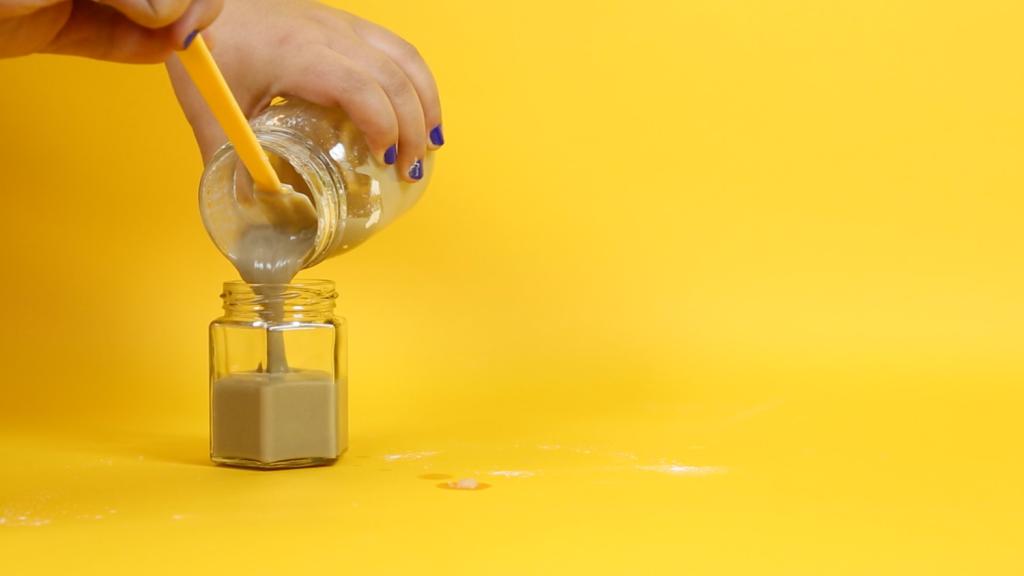Growing up with severe acne was all sorts of difficult — especially as a fifth grader living in a suburb of the so-called City of Angels. In a community focused on flawlessness, having a faceful of acne from the get-go made me feel like a freak.
My cystic acne meant that painful bumps formed underneath my skin, rather than at the skin’s surface like a regular old pimple. This was the worst in middle school, a minefield of awkwardness that’s traumatizing enough without having a giant zit pop in the middle of a math test. At the best of times, my acne made me feel like I was going through my own personal bubonic plague.
I tried a slew of medications with few results. In high school, I tried Accutane, the infamously powerful acne medication that was taken off the market in 2009. My skin mostly cleared up, but I’d still break out pretty regularly.
Instead, I dove into the wide world of makeup, hunting down the best concealers and mineral foundations to disguise the dozen epidermal Mt. Vesuviuses all over my face. My acne killed my confidence, and while going au naturale may have been best for my skin, I found makeup empowering. With just a touch of cover-up and eyeliner, I felt like a normal human being. Going bare-faced brought flashbacks of being called a “pizza face” by my clear-skinned peers. Because my newfound products set a precedent for my daily appearance, I maintained a militant makeup routine through graduation.
And all of a sudden, when I moved to Seattle for college, my skin troubles cleared up.
[grist-related-series]
My skin could have improved for any number of reasons: hitting adulthood, having a delayed response to my Accutane medication, or even improving my diet. But I could think of another contributing factor: The Pacific Northwest air was significantly cleaner than L.A.’s smoggy skies. The city has consistently poor air quality and, as of 2014, has the worst ground level ozone pollution out of any metropolitan city in the U.S. In the American Lung Association’s latest report, L.A. also scored poorly for its high levels of year-round airborne particle pollution — although those levels were lower this year than ever recorded. Seattle’s is just a fraction of L.A.’s. Throughout my life, dermatologists have told me my acne is a product of both my genetics and external factors. But as I saw fewer and fewer zits in the mirror, I began to wonder: Is air pollution really responsible for my acne?
According to naturopathic dermatologist Anne Marie Fine, tiny toxic particles in the air could be a culprit in my case of bad skin. However, much like linking hurricanes directly to climate change, it’s difficult to say whether poor air quality is the main contributor to my difficult skin.
“There’s definitely something there, but it’s hard to make the specific correlation … There are some older studies, but not until relatively recently did this become more of a hot topic,” says Elizabeth Tanzi, a dermatologist based in Washington, D.C. “We see it clinically and the scientific studies support it. It’s breaking down the skin’s barrier, [which] causes this kind of low-level chronic inflammation.”
According to Tanzi and Fine, that inflammation can result in sensitive and rapidly aging skin. But because air pollution is such a widespread problem, scientists are finally getting on board to do more research.
“This is kind of a hot topic — [seeing] what the effects of ozone are on the skin and particulate pollution,” says Tanzi. “A lot of it is being spearheaded by skin care companies, as you can well imagine, because they are looking to come up with products that can help offset this kind of chronic inflammation.”
Beauty companies around the world have marketed hordes of products to ward off the effects of air pollution – everything from outrageously priced antioxidant skin serums to sonic cleaning brushes that all claim to scrub away or protect skin from airborne irritants. Many of these brands, perhaps unsurprisingly, are based in highly polluted Asian countries. High-end skincare lines from South Korea, a country struggling with astronomical levels of air pollution, have become highly desirable and trendy in the United States. In Asia, more research is being done to measure the effects of air pollution on skin and beauty companies are launching more products to meet concerned consumers’ demands.
“Particles in the nano-sized range, especially from traffic, are considered among the most harmful,” says Fine. “What they do is carry stuff [like] organic chemicals and metals, and their small size actually lets them penetrate the skin barrier.”
So where exactly would these heavy metals in the air come from? According to Fine — and reiterated by numerous other studies — car exhaust fumes are a primary culprit for airborne metal particles. As a result, sitting in traffic, where the skin is still exposed to car fumes even inside the vehicle, basically gives skin time to soak up the smog. In L.A., driving (or, more accurately, sitting in traffic) is akin to breathing. Because of that, an hour-long morning commute can be prime time for exposing one’s skin to airborne toxins, thanks to cars’ air circulation.
“This particulate matter is pretty small and it can get through your skin. Once it’s in there, polycyclic aromatic hydrocarbons (PAHs) can penetrate the skin two different ways: They can go through the hair follicles … [and] they can move through the skin barrier because of their small size,” says Fine.
According to a 2014 study in Frontiers in Environmental Science, PAHs bind to particulate matter, which can come from cars, and float around in the air. When these particles enter the skin barrier, the body’s natural defense systems cannot fight off the harmful chemicals and leads to oxidation, which harms skin cells and causes skin aging, the study reports. That oxidation has been linked to causing dark spots, eczema, and acne.
But studies like this one are few and far between, which I find troubling. Although I didn’t discover any clear-cut answers about air pollution’s connection to acne, that first question led to many others: Are there other environmental factors that contribute to our appearance? What’s really in all those products I’ve hoarded? Is there a way for me to be a greener beauty consumer and still look good? These questions led me to “Pretty, Complicated,” a series exploring the environmental impacts of the cosmetics and personal care industry.
Recently, the cosmetics industry has come under fire for its outdated regulations, which control which ingredients are used in everything from makeup to toothpaste. This is why Sens. Dianne Feinstein (D-Calif.) and Susan Collins (R-Maine) have proposed the Personal Care Product Safety Act. The bill would update the Food and Drug Administration’s regulations for cosmetics ingredients, which haven’t been changed since 1938. (In the U.S., just 12 ingredients, including chloroform and mercury, are banned from being used in manufacturing cosmetics. The European Union, by contrast, has banned more than 1,300 cosmetic ingredients.) When we slather these products on our bodies every day, we have to ask: Why isn’t more medical research being done to study the hundreds of potentially harmful ingredients still allowed in U.S. cosmetics and how they affect our bodies?
And when we wash our foundation down the drain at the end of the day (when we remember to, at least), how do those chemicals affect the ecosystems around us?
Many, many women, myself included, use some combination of products, from eyeliner to shampoo, nearly every day for a whole spectrum of reasons (that aren’t necessarily mutually exclusive): We feel pressured by a certain societal standard of physical attractiveness, or we just genuinely enjoy getting dolled up. Yet we’re often chastised for our beauty routines — for the perceived frivolity, “wasting time” looking for new products, or the vanity implied by simply having “a beauty routine” at all.
The subject of cosmetics isn’t taken seriously – but it should be. When we take the time to squint at products’ ingredient labels or do a bit of research before investing, we are trying to protect our long-term health. But should it really be so hard to figure out if our beauty products are effective and safe — for both our bodies and the environments we live in?
Follow along with us as we explore this in “Pretty, Complicated.”



